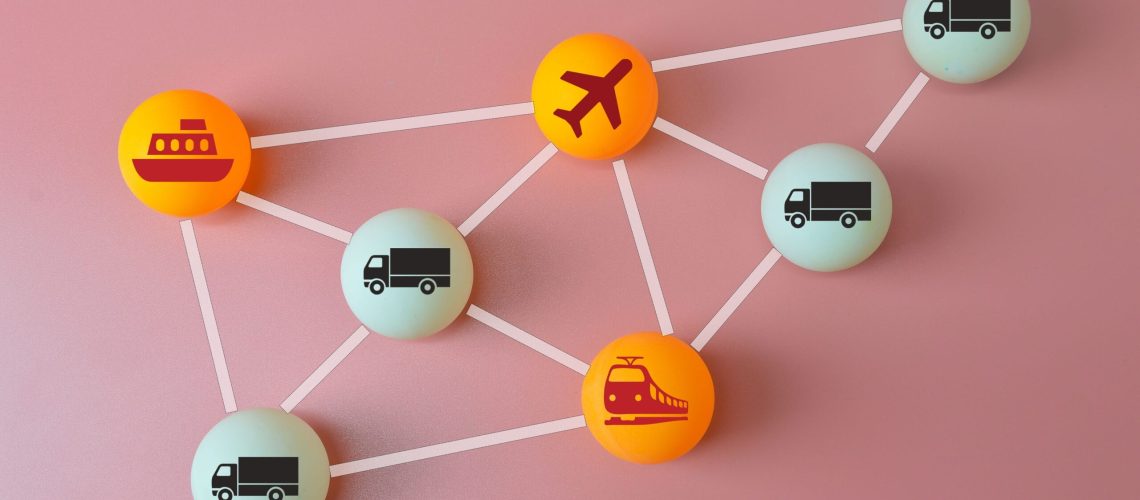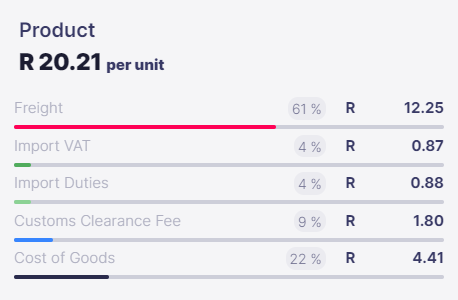
In today’s volatile economy, it’s more important than ever to focus on building a stable supply chain. This article will help you to do just that.
In the volatile economy of today, you can’t control your customers’ spending habits or the price of petrol. And you certainly can’t control whether or not your suppliers will be there for you when you need them most. But here’s one thing you can control: the stability of your supply chain.
A strong supply chain is the backbone of any business
The state of your supply chain is defined by your ability to respond to disruptions. And as a business owner looking to grow your company, you must be able to respond successfully in order to meet the needs of Africa’s SMEs—which play an outsized role in Africa’s economies and provide 80% of the workforce in both the informal and formal sectors. A solid supply chain management plan is a must for any growing company, yet there are still many businesses that do not have one in place today.
The first step is to understand what supply chain management actually means. It’s not just about getting goods from point A to point B — it’s about keeping your business running smoothly throughout every stage of production and delivery. You know what they say – you’re only as good as your weakest link, and this is especially true when it comes to your supply chain! You’ll want to think about how each step affects your overall strategy, from sourcing raw materials to delivering finished products.
So, how exactly do you strengthen your supply chain?
Before doing anything else, take stock of your current situation by assessing what you have right now and what needs improvement. Who are your suppliers? Do you have reliable relationships with them? How long does it take for goods to arrive at your doorstep? Do you have the ability to control costs and inventory levels?
Here are some red flags that can help you identify suppliers who need to be axed (ignore these at your own risk)
Poor quality control practices
Inability to meet delivery deadlines consistently
Unclear pricing structure
By assessing your current situation, you can get an idea of where to start building your stable supply chain and help identify areas that aren’t performing well enough for your business needs.
Only work with suppliers that meet your company’s standards and are reliable. You should also have an established relationship with them, so they are comfortable working with you and will go above and beyond to meet your needs.
A single supplier simply doesn’t provide enough flexibility for managing risk in this day and age. If something goes wrong with one supplier, then your entire operation could be affected! If there’s a certain type of product that your business relies heavily on, such as air fryers, try to have at least two or more suppliers for that product category. This way, if one supplier has an unexpected shortage or delay in supply, you won’t be left high and dry because you’ll still have another source to order from.
You can’t manage what you don’t measure. Take an inventory of all the products you carry by using inventory software that tracks all incoming and outgoing shipments. This will let you easily see if there are any issues with product availability or customer satisfaction.
You may want to offer flexible payment terms to encourage customers to buy from you instead of your competitors. This will help create a sense of urgency among your customers and encourage them to place an order sooner rather than later.
In this age of instant gratification, many businesses have turned to air freight to handle their shipments. Why? It’s fast, it’s convenient and it keeps costs down! If you’re looking for a trustworthy consolidation service, look no further than Airpool. We want you to know where your shipment is at all times. Airpool provides detailed tracking information so you can monitor your shipment every step of the way.
The right technological help can be the wind beneath your business’s wings. It not only allows you to do more with less, but also provides new ways to reach customers and enhance internal processes. A smart, cloud-based solution can also give you greater flexibility to adapt to changing market or business needs. For example, the shift toward telecommuting and hybrid workstyles has become much easier for businesses with cloud-based infrastructure.
The world of commerce is changing. Not only are new technologies and innovations constantly being introduced, but the geopolitical landscape is also shifting, bringing with it new challenges and opportunities. As an entrepreneur, you need to adapt to these changes in order to survive and thrive!
By building a stable supply chain that can weather the storms of an unstable economy, you can have your business poised for success as far into the future as you can see, while still being adaptable to any unexpected changes that may come.
Back To School: Don’t Be Left Stationery This New Year [UPDATED 2023]
Landed cost is the sum of all expenses associated with importing your goods from China to South Africa. This includes the cost of the goods paid to your supplier, the shipping costs, clearance costs and the import taxes & duties.
It is represented on a per unit cost and helps you with:
Note: This is not what you are paying to Airpool but rather what you are paying to all the suppliers and relevant parties: Airpool, the Manufacturer of the goods and the Import Taxes (VAT & Duties)
